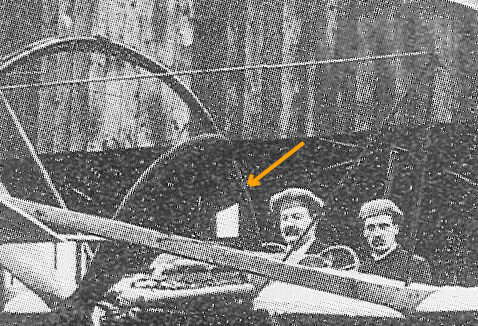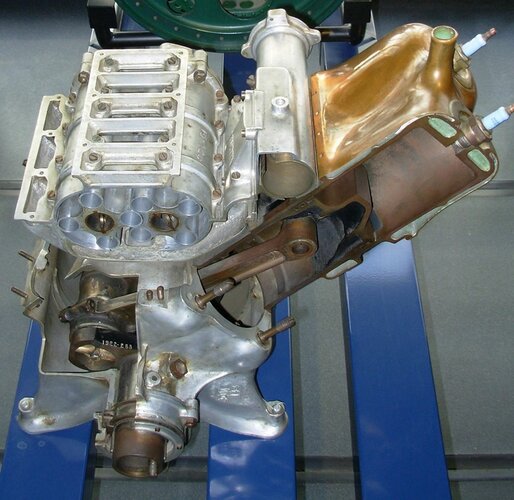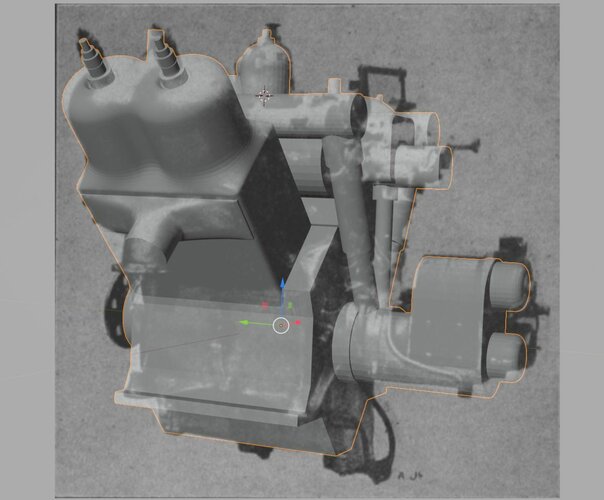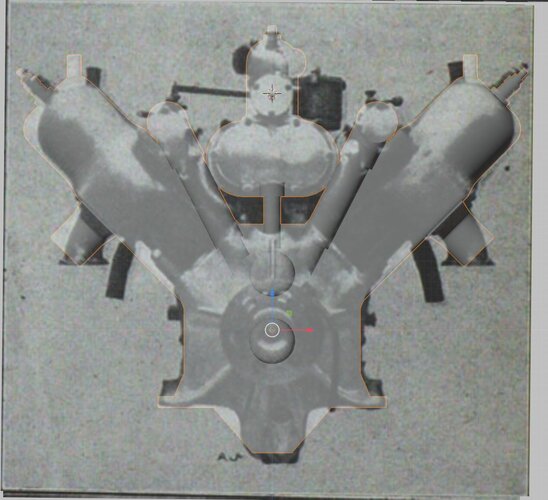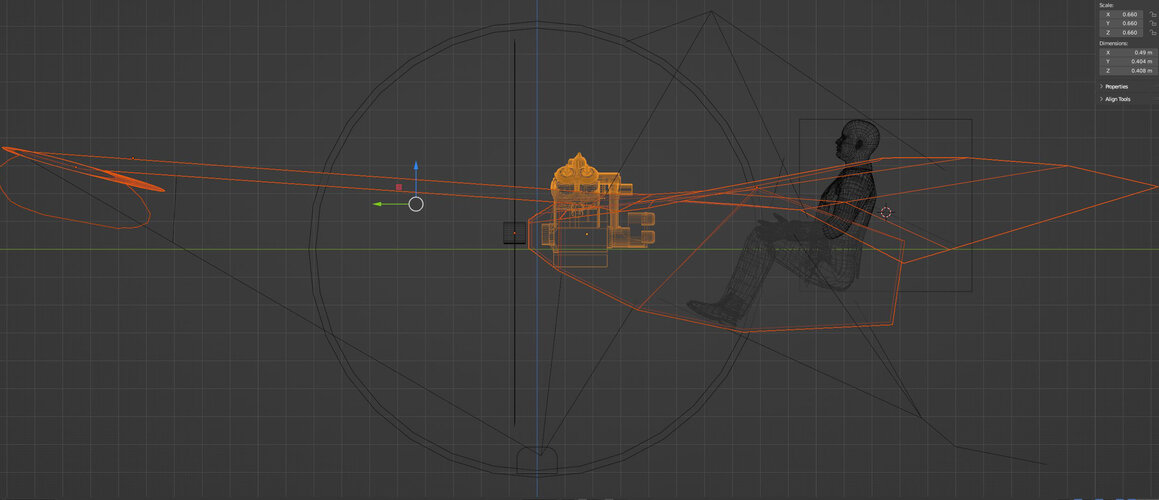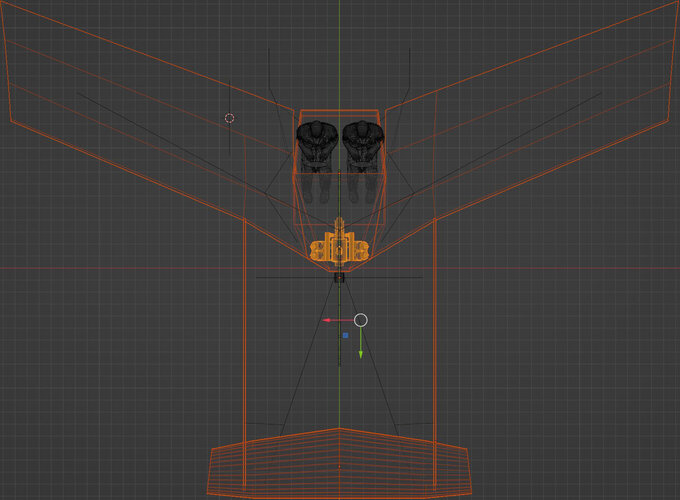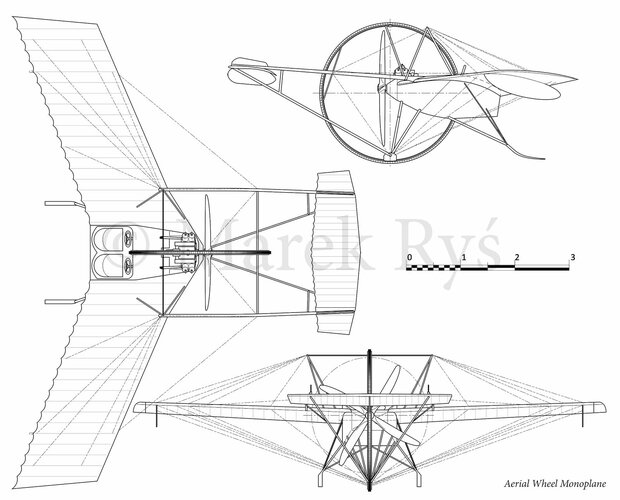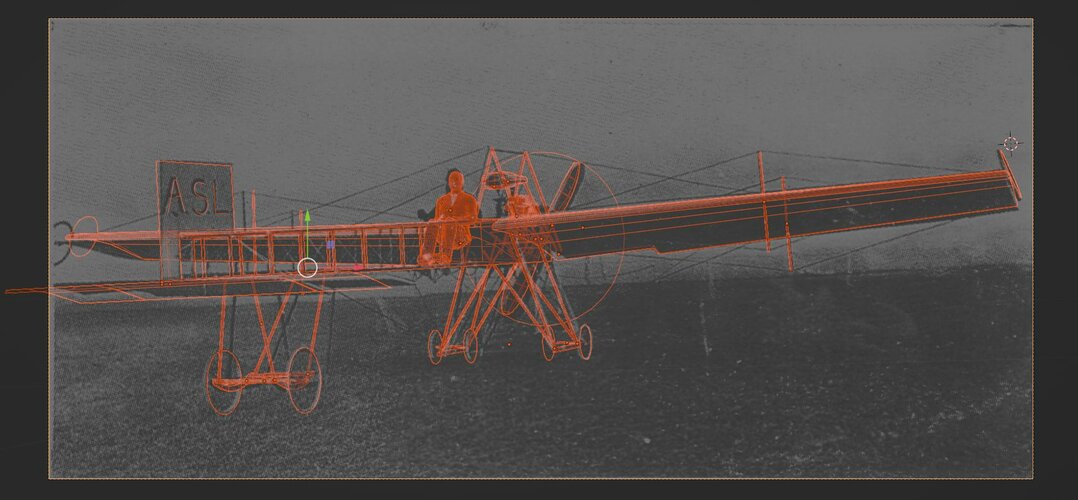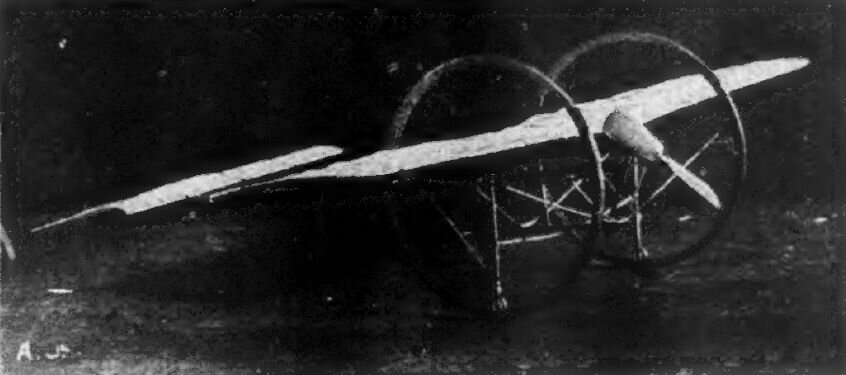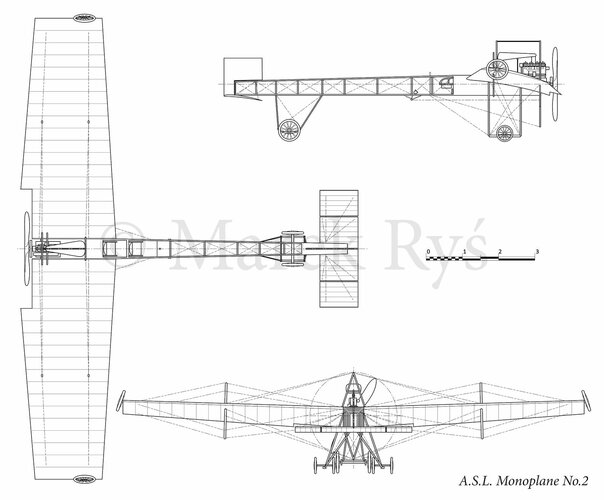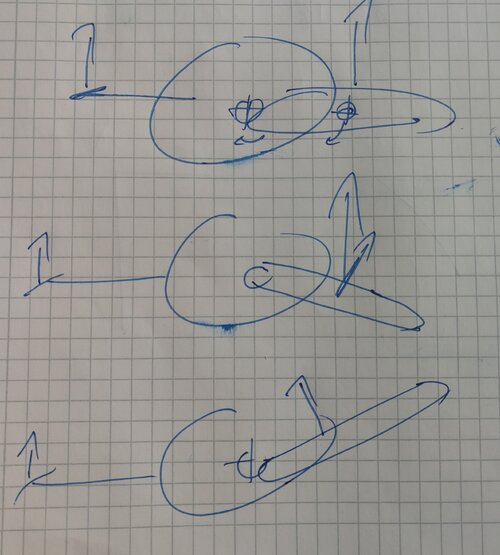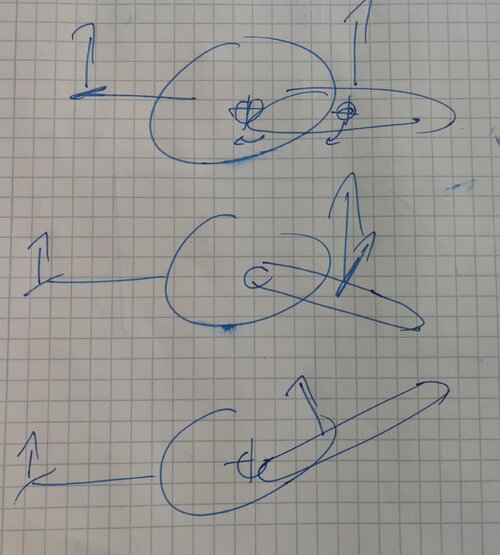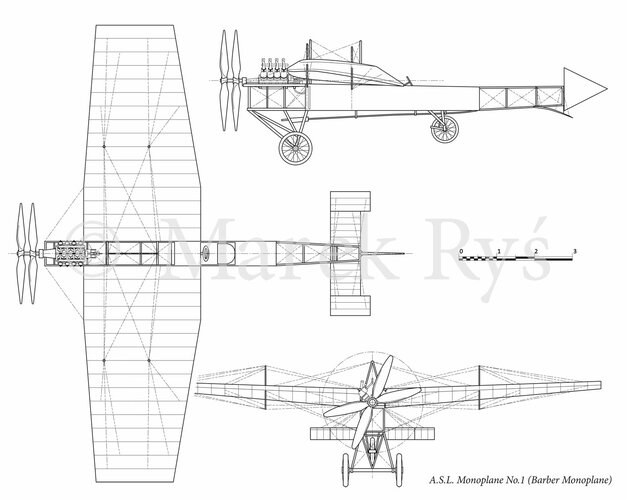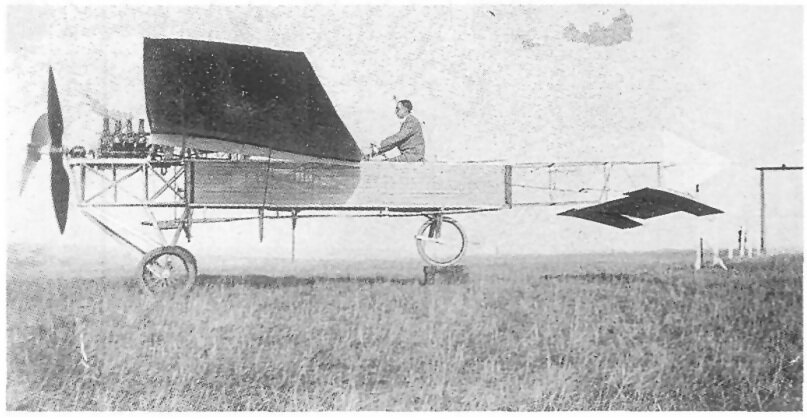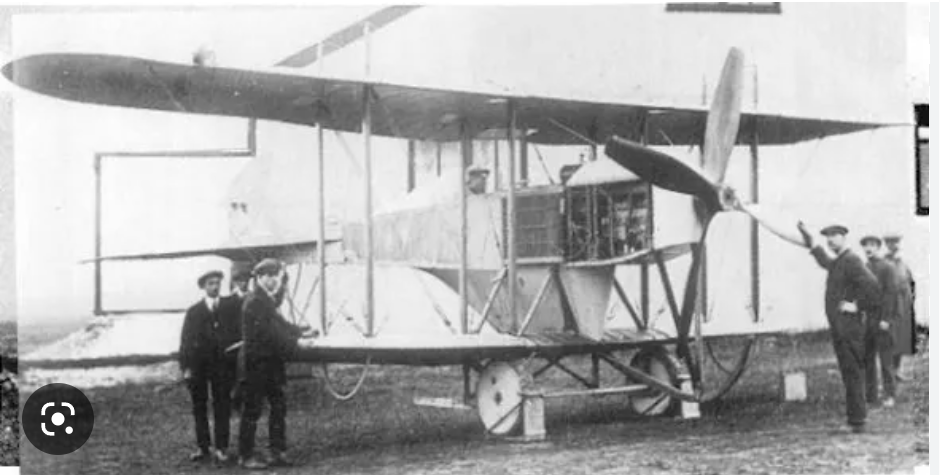mrys
ACCESS: Confidential
Cause actually I'am side working with british planes, decided to fit all in one thread. Think, that it will be more friendly for all 
Hi All!
Since few days I tried to reconstruct strange monoplane of Aerial Wheel Syndicate. It was built in 1912 (but never flew) to compete in the Military Aeroplane Competition which was to be held at Larkhill. Exist one photograph and simple sketch of this plane. Problem is, that sketch (probably oryginal from patent, but didn't saw this paper) only a bit correspond with photograph.
I tried to use some architect programs for dig basic shape and proportion from photograph, but unfortunatelly angle is not very friendly for this work. Here are mine effect for now (still at work) bit different from sketch.
Plane is described in few sources, but I'am not sure if airframe description is based on sketch - then it is not 100% right I think.
But I'am also not so succesful so far. There is not big deal to fit main wheel and propeler theoretical wheel - they fits well, but then many unfited elements start to appear after symmetry is turn on - left side fit, right not so. But still fighting.
Oryginal sketch:

Mine trials:




Second thing - engine. On oryginal sketch is four cylinder inline, but was used NEC 50 hp engine, four cylinder in V.

Hi All!
Since few days I tried to reconstruct strange monoplane of Aerial Wheel Syndicate. It was built in 1912 (but never flew) to compete in the Military Aeroplane Competition which was to be held at Larkhill. Exist one photograph and simple sketch of this plane. Problem is, that sketch (probably oryginal from patent, but didn't saw this paper) only a bit correspond with photograph.
I tried to use some architect programs for dig basic shape and proportion from photograph, but unfortunatelly angle is not very friendly for this work. Here are mine effect for now (still at work) bit different from sketch.
Plane is described in few sources, but I'am not sure if airframe description is based on sketch - then it is not 100% right I think.
But I'am also not so succesful so far. There is not big deal to fit main wheel and propeler theoretical wheel - they fits well, but then many unfited elements start to appear after symmetry is turn on - left side fit, right not so. But still fighting.
Oryginal sketch:
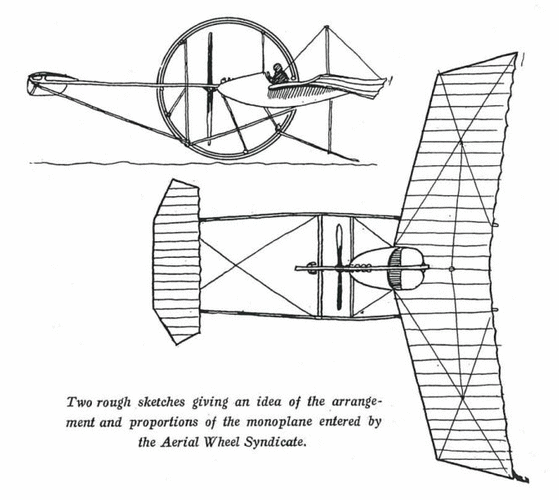
Mine trials:
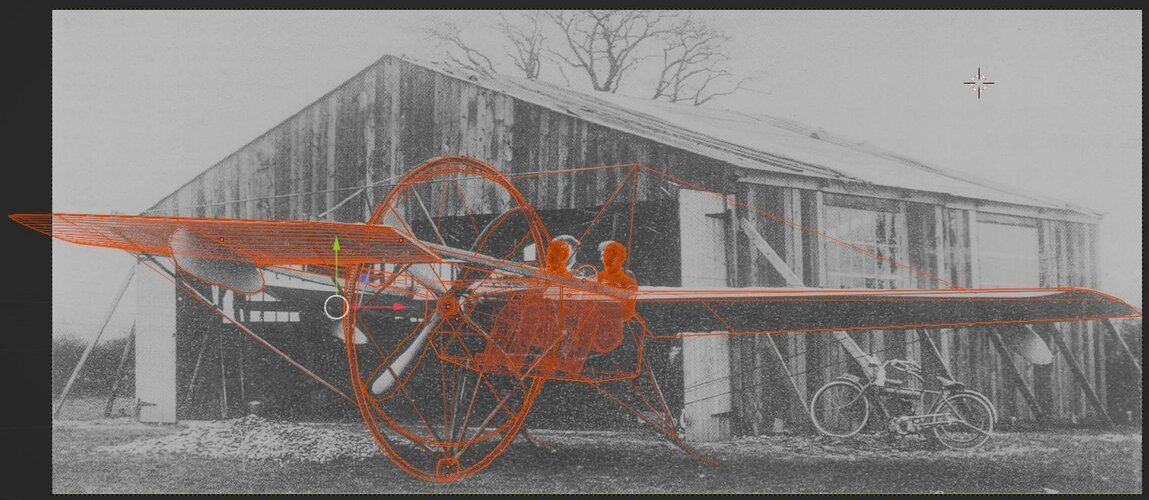
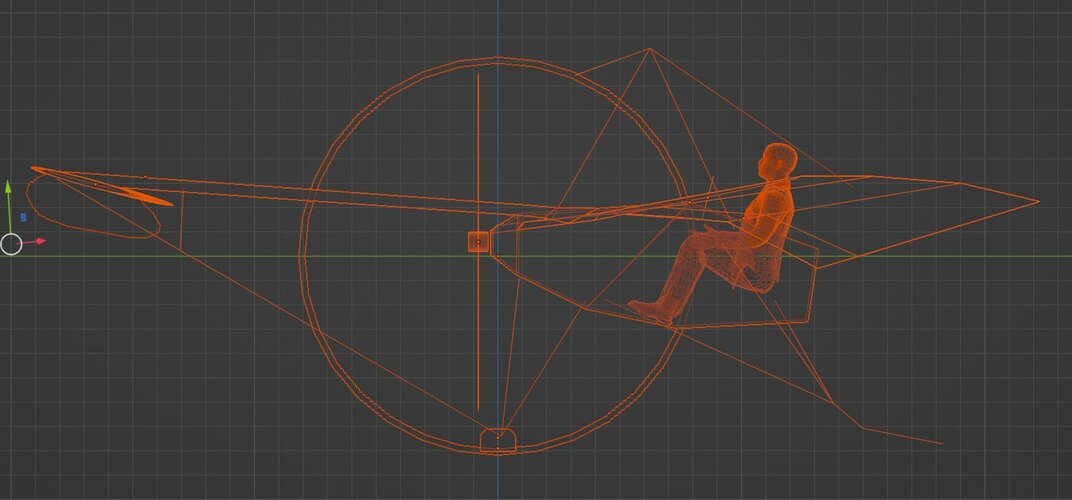
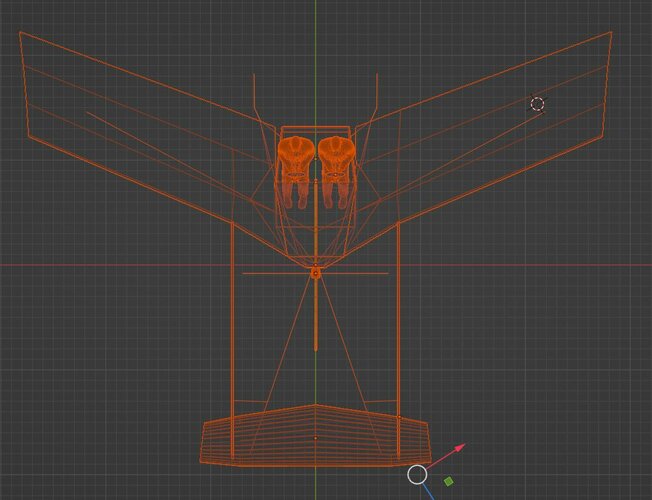
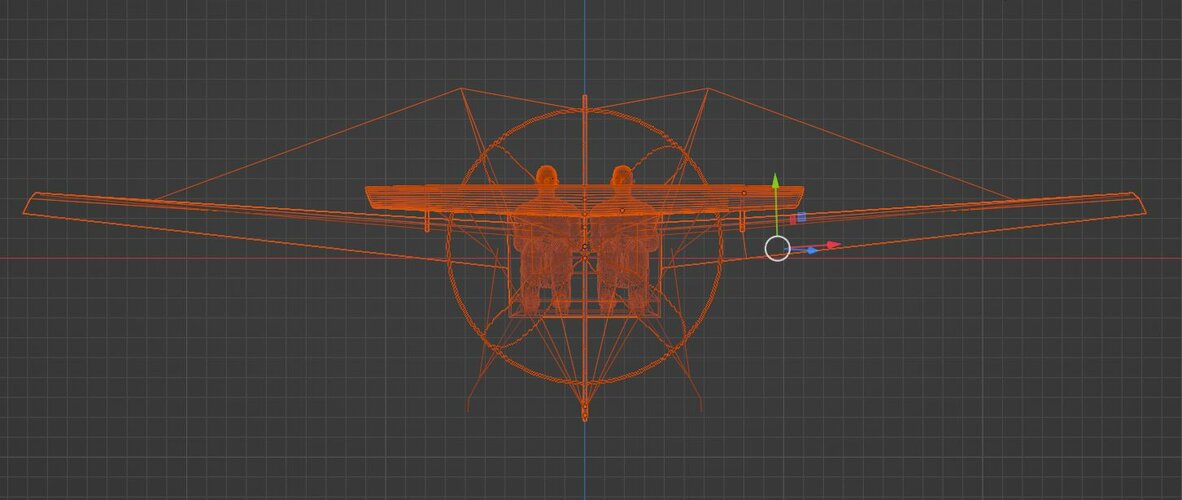
Second thing - engine. On oryginal sketch is four cylinder inline, but was used NEC 50 hp engine, four cylinder in V.
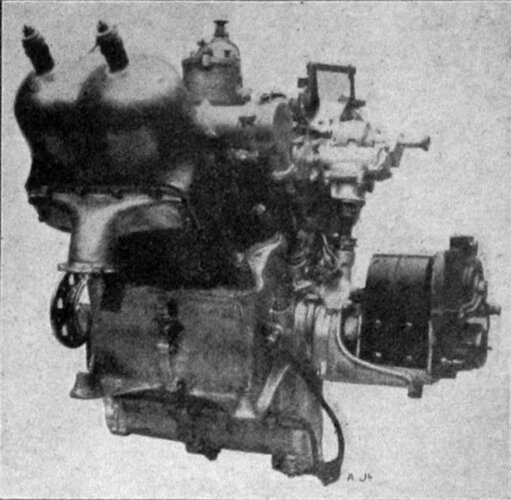
Last edited:

